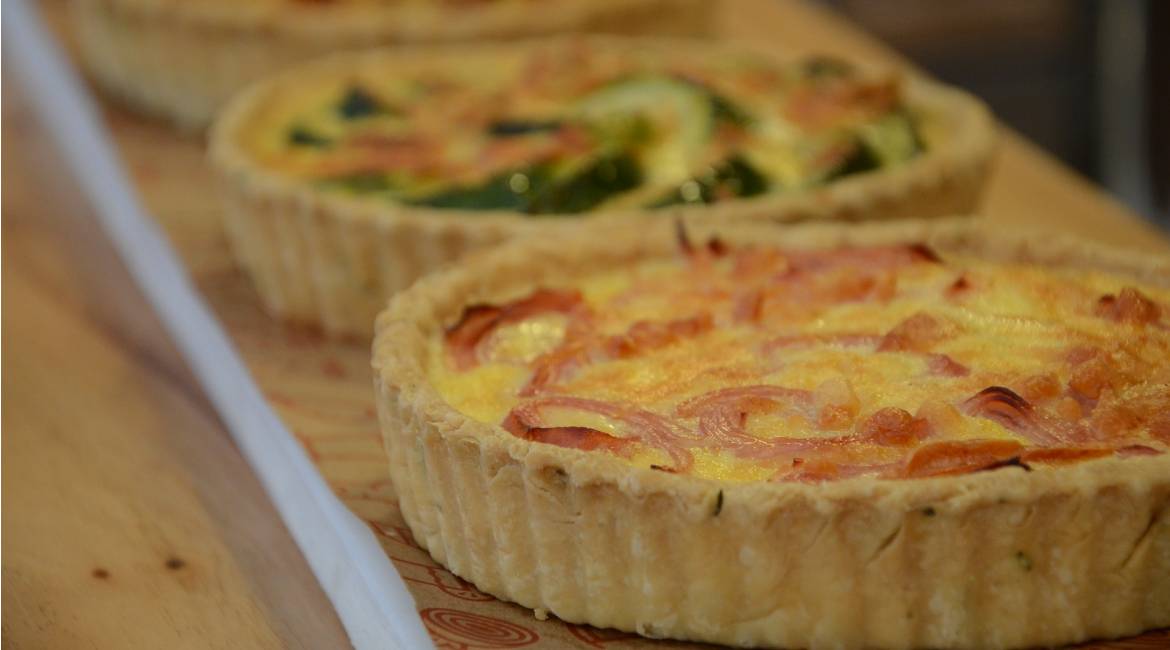My Easter in Tuscany
When I was a little girl, my grandmother Lina usually made a savoury tart with greens for me at Easter and she told me that when she was a girl my age, growing up in the Chianti countryside before the war, it was clear to her that Easter was coming when she saw the chimney sweeps arriving.
They went from house to house, offering their services in exchange for some food and maybe some money, although that was often difficult to find in the peasant's house. The women, having had their chimneys cleaned and the soot filling their houses then began the real spring cleaning - doors and windows were opened wide, not least because this also let in a little sun and warm air; someone like me, who has lived in stone farmhouses for years, knows that in the mid-seasons it is hotter outside than inside the house. "We began to move and clean everything, inside and outside the home; in fact, in Spring the branches that had been cut from the pruning of the olive trees were burned. Finally, even the Christians washed themselves ... finally it was less cold and then soon there would be Holy Easter.
In the countryside everyone went to Mass on the commanded days and Easter was no exception ... there were those who really were believers and those who did it out of a sense of obligation; but we boys and girls would go there quite willingly because it was the only time when we could meet each other without being overly controlled by our parents! On Easter Saturdays and Sundays we went in small groups to the countryside to play with cowbells. We enjoyed watching the trees and all of nature wake up and we loved to make jokes and laugh together.
 We girls combed our hair in the light of the full moon because the grown-ups said that hair grew thicker and longer this way.. but yet we could not say this out loud to our mothers. - I often wondered why there was a need for so much secrecy. As I grew up I discovered or at least I came to believe that in the countryside of those years, there still existed, however weakly, the echo of fertility rites ...... The Christian religion had tried to cancel all the rituals connected to nature that had existed and therefore every religious holiday was made to coincide with the "pagan festivals". Ostara, a goddess of fertility in the Germanic tradition, gave her name to the English Easter and to the German Ostern.
We girls combed our hair in the light of the full moon because the grown-ups said that hair grew thicker and longer this way.. but yet we could not say this out loud to our mothers. - I often wondered why there was a need for so much secrecy. As I grew up I discovered or at least I came to believe that in the countryside of those years, there still existed, however weakly, the echo of fertility rites ...... The Christian religion had tried to cancel all the rituals connected to nature that had existed and therefore every religious holiday was made to coincide with the "pagan festivals". Ostara, a goddess of fertility in the Germanic tradition, gave her name to the English Easter and to the German Ostern.
Instead, we in Italy inherited the Hebrew name of Easter Pesah. In Spring the rebirth of nature was celebrated, therefore fertility was celebrated and both the Easter bunny, (better known in the Nordic tradition, ) and the Easter egg were given as symbols of abundance and as good omens. In memory of my grandmother and of all the women who lived somewhat hidden but yet very much alive, I write fot you the recipe of pizza con le erbe.
Recipe
INGREDIENTS for the pizza dough
500g stone milled flour
250-300 gr tepid water dried yeast salt, a pinch of sugar
2 C. extra virgin olive oil
for the filling
1,5 kg curly escarole
1 garlic clove
4 handfuls of chervil
10 anchovy fillets in oil
100 gr black olives
50 gr. raisins
50 gr. pine nuts
4 C. extra virgin olive oil salt and pepper
INSTRUCTIONS
 In a bowl we prepare the dough and let it rise for the necessary time, about 2 hours. Wash the vegetables well, then
In a bowl we prepare the dough and let it rise for the necessary time, about 2 hours. Wash the vegetables well, then  blanch them quickly in boiling, salted water. Once drained and cooled, we squeeze them well and then fry them in a large pan with 4 C. of oil and a clove of garlic. Cook for 5 minutes and then add black olives (halved) anchovies, raisins and pine nuts. Season with salt and pepper. We line a round baking dish and cover it with two-thirds of the dough. Fill with the herbs, cover with the remaining dough, brush with oil and bake at 200 degrees for 35-40 minutes.
blanch them quickly in boiling, salted water. Once drained and cooled, we squeeze them well and then fry them in a large pan with 4 C. of oil and a clove of garlic. Cook for 5 minutes and then add black olives (halved) anchovies, raisins and pine nuts. Season with salt and pepper. We line a round baking dish and cover it with two-thirds of the dough. Fill with the herbs, cover with the remaining dough, brush with oil and bake at 200 degrees for 35-40 minutes.





